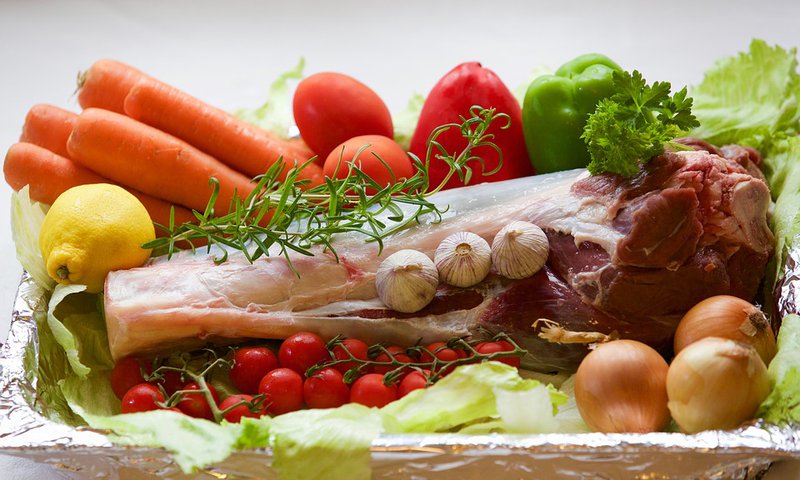Listeriosis - a crisis with a mystery source
Updated | By Wendy Knowler
South Africa’s listeriosis crisis been coming on for a while - the National Institute of Communicable Diseases (NICD) has been tracking the cases for the past year, and keeping very quiet about it.

The numbers peaked last August, the
news became public only in December, and new cases are currently being
confirmed at a rate of about 10 a week.
And finally, listeriosis has been declared a notifiable disease.
There’ve been 727 cases so far - 7% or about 50 of them in KZN.
61 people have died, about 40% of them babies less than four weeks old,
pregnant woman being more than 20 times more likely to get listeriosis than
other healthy adults.
The death rate from listeriosis is alarmingly high - 20 to 25%, compared with
salmonella or ecoli which have mortality rates of less than 1percent.
Most at risk besides pregnant women are people over 65 and anyone with a
compromised immune system: those with HIV/AIDS, diabetes, cancer or organ
transplants.
Those with confirmed listeriosis were patients in both State and private
hospitals - roughly two thirds in State hospitals and a third in private
hospitals.
Of course the burning question is - where is the listeria coming from?
Sadly, the authorities still don’t know. It’s been hailed by food scientists
around the world as the biggest outbreak of listeriosis ever recorded, but a
year down the line, they are none the wiser as to the source.
And here’s the thing - the NICD has established via genome sequencing that in
almost all cases, the listeria came form a single source. One particular
product or range of products.
Pretoria-based microbiologist and food safety expert, Dr Lucia Anelich, had
this to say about the food culprit: “It is most likely a product that is very
widely consumed and consumed extremely often and that is why we are seeing a
spike in cases. South Africa has actually had a number of cases every year, but
there has never this alarming a rate…”
Listeriosis symptoms show up any time between two and 30 days after eating food
contaminated with listeria. In pregnant women they include mild flu-like
symptoms, headaches, muscle aches, fever, nausea, and vomiting. If the infection
spreads to the nervous system it can cause stiff neck, disorientation, or
convulsions.
So here’s the big question for consumers: what foods should we be avoiding
during this listeriosis outbreak, while the authorities still no idea which
widely sold and consumed product is the culprit?
Firstly, ready-to-eat foods which you don’t cook or heat (which kills the
listeria organism) before eating, primarily deli meats - slices of ham, polony,
cooked chicken etc, as well as refrigerated pâtés or meat spreads;
unpasteurised (raw) milk and cheese made from them - not common in this country
- refrigerated smoked seafood, raw sprouts and pre-packaged salads.
“Deli meats are obviously consumed by a wide variety of people in the
population, whether it’s a cheaper cut or a more expensive one,” Anelich says.
"But there are likely other products that might also be just as implicated
and it’s really difficult at this stage to point a finger in a specific
direction, considering we have absolutely no other leads at this stage.”
And to make matters worse, can listeria carry on growing, even in a fridge.
“Listeria can grow at refrigeration temperatures, which is one of the traits of
this organism that many others don’t have. So it is very important that
consumers check the temperature of their fridges and keep it below 4 degrees
Celcius,” Anelich says.
"The majority of our home fridges are actually not running at 4 degrees;
they are often run at higher - 5, 6 and even 8 degrees. So it really important
that we monitor the temperature of our fri fridge with a thermometer."
And there are other things we can and should do to protect ourselves from all
food borne diseases - wash your hands often and ensure that we don’t
contaminate cooked food with raw food or juices.
So if you cut meat on board, don't put the cooked meat back onto that board or
cut it with the knife you used to cut it when raw. Or take meat off a braai and
put it back into the container it was in when raw.
And always keep cooked meat on a fridge shelf above raw meat so raw meat juices
can’t drip on it.
I asked Anelich what she’d advise she’d give her doughter if she were pregnant
now, given the mystery source of the listeriosis.
“I would certainly advise her to avoid all the listed high risk products that
are typically associated with listeria, if they can’t be cooked fully before
consumption. So if she was about to make a sandwich with a slice of deli meat,
and maybe some sprouts, and maybe some pre-packaged salad, I would certainly
advise her not to to that.”
For more information about listeriosis in general and this outbreak in
particular, go to Anelich’s website: http://anelichconsulting.co.za
Show's Stories
-
A resignation letter of note goes viral on TikTok
A good mix of positivity, gratitude, and leaving on a good note.
Vic Naidoo 1 year, 9 months ago -
Man hires a body double to take his driver's exam
Everyone fails at one thing or another, there's no escaping it.
Vic Naidoo 1 year, 9 months ago